Minneapolis suffered one of the worst bridge collapses in the US in 2007, but implemented repairs within 13 months.
This is not the first serious bridge collapse in the US. 17 years ago, the city of Minneapolis in Minnesota witnessed a similar tragedy.
The moment a container ship crashed into a bridge in Baltimore, Maryland, USA on March 26. Video : Reuters
On August 1, 2007, as cars were lining up during the evening rush hour on Interstate 35W in Minneapolis, the eight-lane bridge over the Mississippi River suddenly collapsed, killing 13 people and injuring 150. The cause of the disaster was attributed to poor design and maintenance of the bridge.
In addition to the immediate loss of life and damage, the collapse of the I-35W bridge also cut off the vital traffic artery connecting Minneapolis and Saint Paul, Minnesota. The bridge, which is about 30 meters above the river, was used by about 140,000 cars a day before the incident.
At the time of the tragedy, many feared the loss of the I-35W bridge would cause traffic chaos in the area. Civil engineer David Levinson, a former University of Minnesota professor who has studied the I-35W bridge, said other bridges in the area could only handle a maximum of 90,000 additional vehicles per day.
To remedy the situation, in the days that followed, the Minnesota Department of Transportation converted the shoulders of major roads and interstate highways into travel lanes, allowing vehicles to move more quickly.
The severe congestion did not occur as predicted and it took US officials only 13 months to build a new replacement bridge.
The city of Minneapolis, known for its many lakes and bridges, and the Minnesota Department of Transportation also immediately inspected bridges across the state and launched a program to repair and replace any structurally unstable bridges within 10 years.
The bridge collapse was initially estimated to cost Minnesota’s economy about $113,000 a day. Five months after the bridge collapsed, some small businesses closed shop, citing a drop in customers.
By the time the replacement bridge was built and opened in September 2008, losses from the bridge collapse were reported to be $17 million in 2007 and $43 million in 2008.
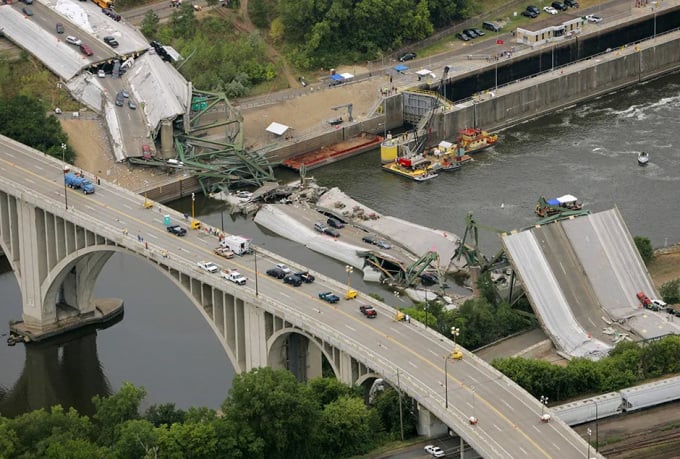
The scene of the I-35W bridge collapse in Minneapolis, Minnesota in August 2007. Photo: MinnPost
The US government also acted quickly, declaring the bridge collapse a federal disaster, allowing affected businesses to receive low-interest loans.
The House and Senate unanimously approved $250 million in emergency funding for Minnesota, and the bill was signed into law by then-President George W. Bush on August 6, 2007, days after the bridge collapsed.
By mid-September, more than a month after the incident, the Minnesota Department of Transportation hired a firm to design and build a replacement bridge at an estimated cost of $234 million.
The new Saint Anthony Falls I-35W bridge opened in mid-September 2008, faster and cheaper than expected, and is considered a remarkable change by many infrastructure standards.
In a 2011 study published in the journal Transportation Technology and Planning, Levinson and professor Feng Xie said that Minnesota's rapid implementation of the remediation project saved commuters between $9,500 and $17,500 per day.
“The benefit-cost ratio is around 2.0-9.0, indicating that these projects are economically beneficial,” Levinson and Xie said.
“The economic impact of the bridge collapse was lower than people initially feared. The ability to adapt to the disaster was almost immediate,” Christopher Phelan, an economics professor at the University of Minnesota, said of the incident.
On the evening of March 26, after the bridge collapse in Baltimore, the Saint Anthony Falls Bridge was lit up in the colors of the Maryland flag. Minnesota Governor Tim Walz announced that he would provide all necessary resources and experience to help Maryland overcome the tragedy.
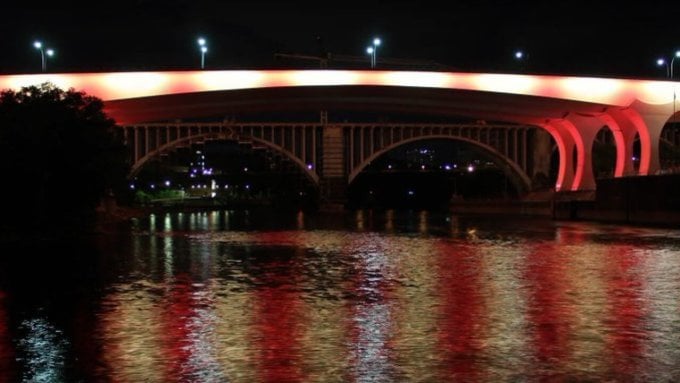
The Saint Anthony Falls I-35W Bridge in Minneapolis is lit up in the colors of the Maryland state flag on the evening of March 26. Photo: WMAR
The cost of rebuilding the Francis Scott Key Bridge is estimated at $600 million, according to analytics firm IMPLAN. The total cost of closing Baltimore's port for a month could be as much as $28 million.
The Francis Scott Key Bridge carries only about 22% as much traffic as I-35W, but is much longer. The collapse of the Francis Scott Key Bridge also forced the closure of the Port of Baltimore, the ninth busiest port in the United States.
"That will take until salvage companies can clear the site. It could take weeks or months to reopen the river and ensure ships can continue to dock at the Port of Baltimore," said Ryan Petersen, CEO of logistics technology company Flexport.
In the immediate aftermath of the Baltimore bridge collapse, Levinson hopes state and federal authorities will pay attention to the vulnerabilities of America's critical infrastructure, which has aged after decades of construction.
"I think this tragedy is not the last. We need to think about how to combat those things," he said.
Thanh Tam (According to CNN, Reuters )
Source link


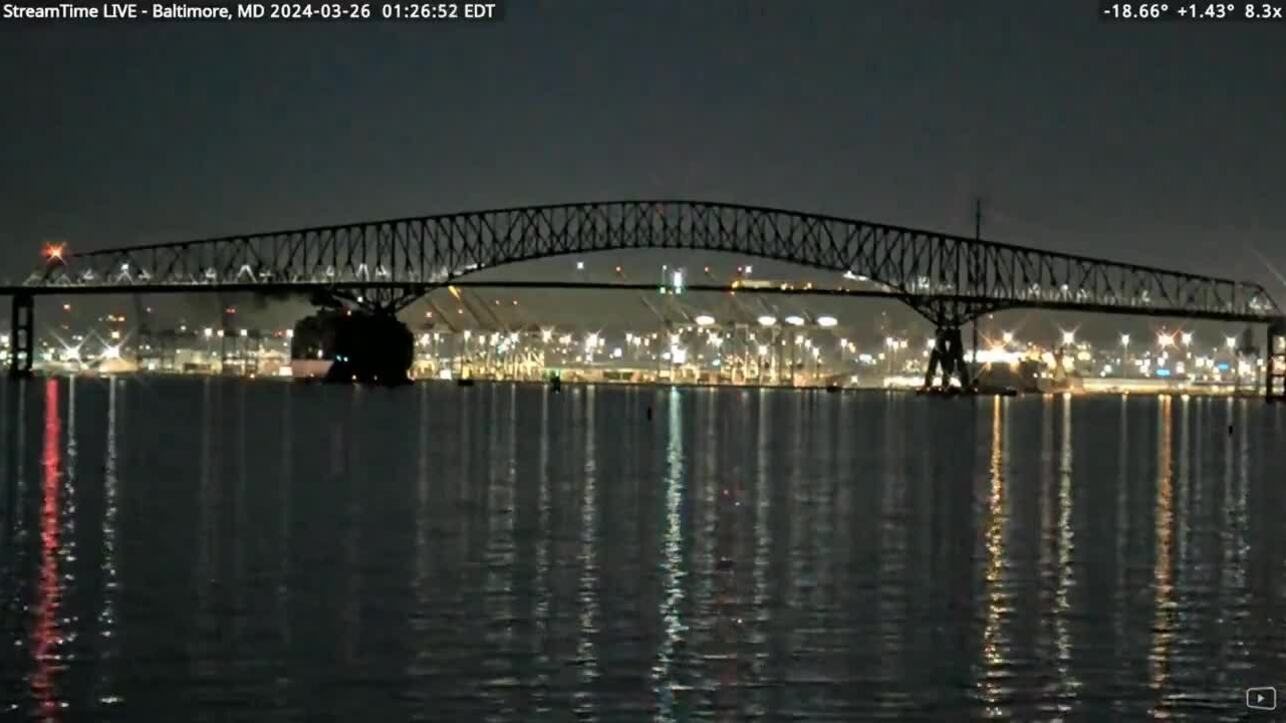

![[Photo] Nhan Dan Newspaper launches “Fatherland in the Heart: The Concert Film”](https://vphoto.vietnam.vn/thumb/1200x675/vietnam/resource/IMAGE/2025/10/16/1760622132545_thiet-ke-chua-co-ten-36-png.webp)



![[Photo] General Secretary To Lam attends the 18th Hanoi Party Congress, term 2025-2030](https://vphoto.vietnam.vn/thumb/1200x675/vietnam/resource/IMAGE/2025/10/16/1760581023342_cover-0367-jpg.webp)






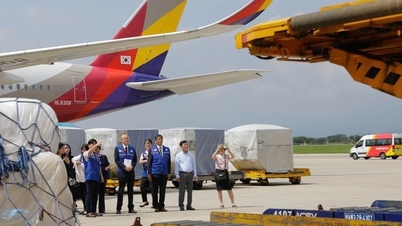


















![[Video] TripAdvisor honors many famous attractions of Ninh Binh](https://vphoto.vietnam.vn/thumb/402x226/vietnam/resource/IMAGE/2025/10/16/1760574721908_vinh-danh-ninh-binh-7368-jpg.webp)

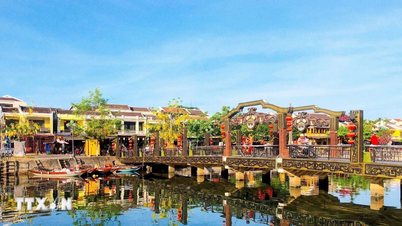

















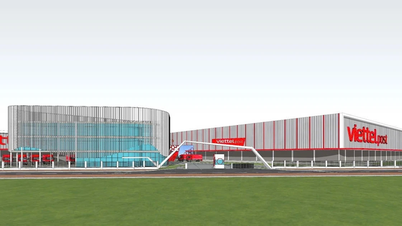






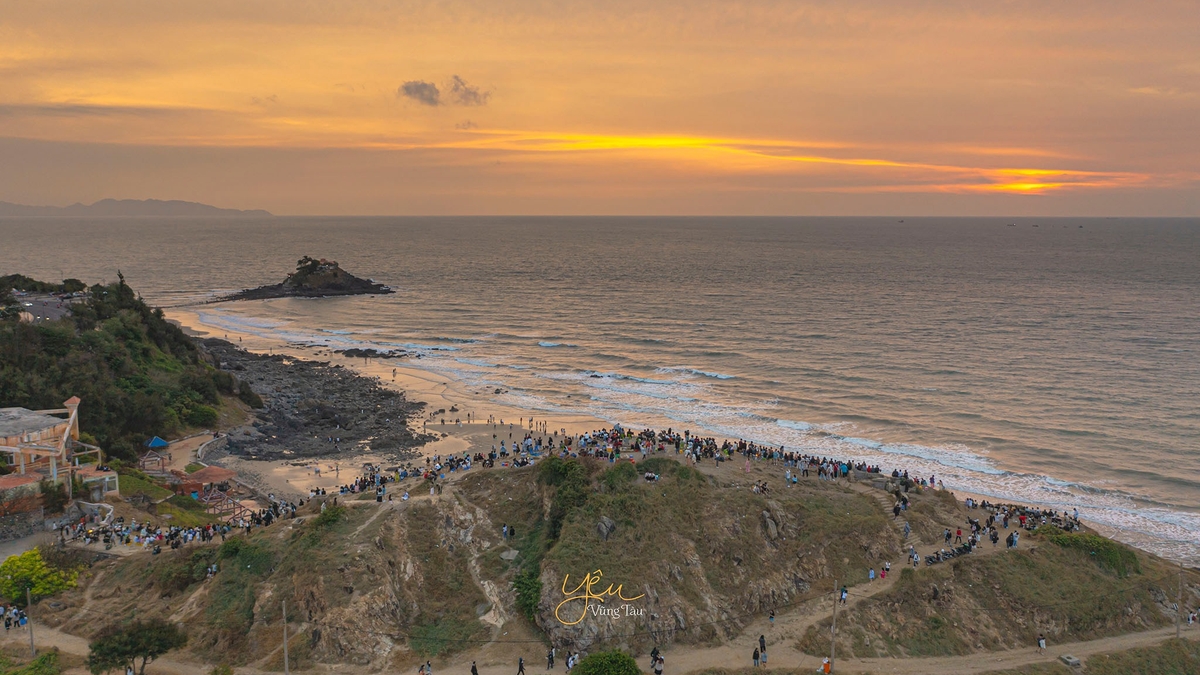



![[Photo] Nhan Dan Newspaper launches “Fatherland in the Heart: The Concert Film”](https://vphoto.vietnam.vn/thumb/402x226/vietnam/resource/IMAGE/2025/10/16/1760622132545_thiet-ke-chua-co-ten-36-png.webp)













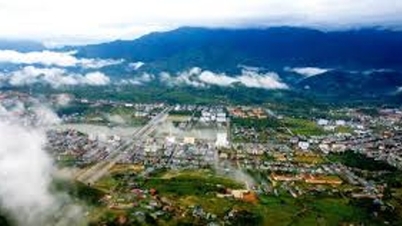

























Comment (0)